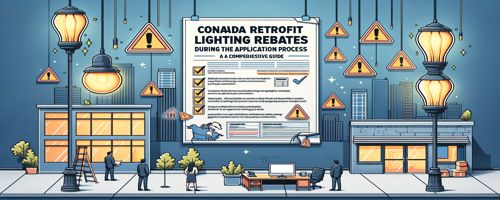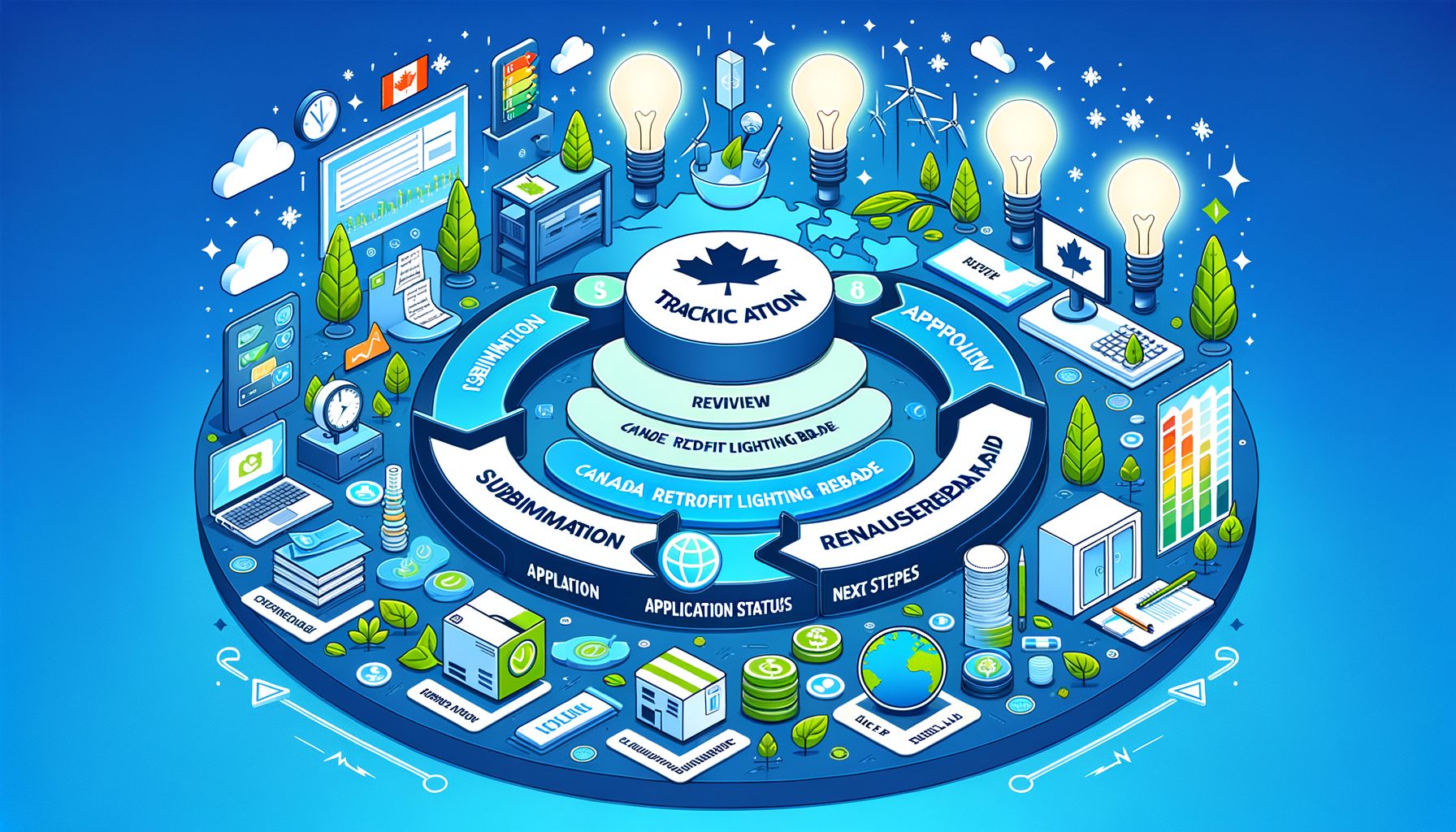Navigating Canada Retrofit Lighting Rebates: A Comprehensive Guide
The push for energy efficiency in Canada has never been stronger, with both federal and provincial governments offering substantial incentives to encourage businesses and property owners to upgrade their lighting systems. Among these, retrofit lighting rebates stand out as one of the most impactful ways to reduce operational costs, improve sustainability, and enhance workplace environments. Save Energy Lighting specializes in guiding clients through the often-complex process of qualifying for and maximizing these rebates. This article delves into everything you need to know about Canada retrofit lighting rebates, from eligibility criteria to application best practices.
Understanding Canada Retrofit Lighting Rebates
Canada’s retrofit lighting rebate programs are designed to incentivize the replacement of outdated, inefficient lighting systems with modern, energy-saving alternatives. These programs are a collaborative effort between federal initiatives like Natural Resources Canada's ecoENERGY program, provincial energy authorities (such as Ontario’s Save on Energy), and local utility companies.
Retrofit rebates typically offer partial reimbursement or direct discounts on the purchase and installation of qualifying energy-efficient lighting products. The value of these rebates can be significant: for example, Save on Energy in Ontario offers up to 50% off project costs for eligible upgrades, while other provinces provide similar or even more generous incentives depending on project scope and energy savings achieved.
Key objectives of retrofit lighting rebate programs include:
- Reducing overall electricity consumption
- Lowering greenhouse gas emissions
- Supporting Canada’s national climate goals
- Improving building safety and occupant comfort
These rebates are available to a wide range of commercial, industrial, institutional, and multi-residential property owners. By partnering with an experienced facilitator like Save Energy Lighting, applicants can ensure they receive the maximum possible rebate while minimizing administrative hassle.
Eligibility Criteria for Retrofit Lighting Rebates
Before diving into a retrofit project, it’s crucial to understand whether your facility qualifies for available rebate programs. While specific requirements may vary by province or utility provider, several common eligibility criteria apply across most Canadian jurisdictions.
Common Eligibility Factors
-
Type of Facility:
Most programs are open to commercial buildings (offices, retail stores), industrial sites (factories, warehouses), institutional properties (schools, hospitals), and multi-unit residential buildings. Single-family homes typically do not qualify under commercial retrofit programs but may have access to separate residential incentives. -
Existing Equipment:
Rebates are generally intended for upgrades—meaning you must be replacing older technology such as incandescent bulbs, T12/T8 fluorescent fixtures, metal halide lamps, or outdated control systems with new ENERGY STAR®-certified or DLC-listed products. -
Project Scope:
There is often a minimum project size (e.g., total wattage reduced or number of fixtures replaced) required to qualify for rebates. Conversely, some programs also cap the maximum incentive per project or per applicant per year. -
Pre-Approval Requirement:
Many utilities require pre-approval before work begins. Starting a project without approval can result in lost eligibility for rebates. -
Location:
Your building must be located within the service area of the participating utility or program administrator.
Special Considerations
Some sectors—such as agricultural facilities or non-profit organizations—may have access to enhanced incentives or simplified application processes. Save Energy Lighting helps clients identify all available opportunities based on their unique situation.
Types of Retrofit Lighting Projects Covered
Lighting technology has evolved rapidly over the past decade. Canadian rebate programs recognize this by supporting a wide variety of retrofit projects that go far beyond simple bulb replacements.
Eligible Retrofit Projects
- LED Fixture Upgrades: Replacing fluorescent tubes or HID lamps with integrated LED fixtures.
- Lamp Replacements: Swapping out inefficient bulbs for ENERGY STAR®-rated LEDs.
- Lighting Controls: Installing occupancy sensors, daylight harvesting controls, timers, and advanced dimming systems.
- Exterior & Parking Lot Lighting: Upgrading outdoor fixtures for improved security and efficiency.
- Emergency & Exit Signage: Converting old exit signs to LED technology.
- High-Bay & Low-Bay Lighting: Retrofitting industrial spaces with high-efficiency luminaires.
- Specialty Applications: Including refrigerated display case lighting and horticultural grow lights.
| Project Type | Typical Rebate Range (USD) | Example Product/Upgrade |
|---|---|---|
| LED Troffer Replacement | $20–$50 per fixture | 2x4 LED panel replacing T8 troffer |
| High-Bay LED Upgrade | $75–$150 per fixture | 200W LED replacing 400W metal halide |
| Occupancy Sensor Install | $15–$40 per sensor | Wireless PIR sensor |
| Exterior Wall Pack | $30–$80 per fixture | LED wall pack replacing HID |
| Exit Sign Conversion | $10–$20 per sign | LED module retrofitting old signs |
Note: Actual rebate amounts vary by province/program; consult Save Energy Lighting for precise figures.
Benefits of Applying Through Save Energy Lighting
Navigating government incentive programs can be daunting due to complex paperwork requirements and frequent policy updates. Partnering with an expert like Save Energy Lighting provides significant advantages:
Expert Guidance from Start to Finish
Save Energy Lighting’s team is well-versed in current rebate offerings across Canada—including regional differences in eligibility rules and incentive structures. They provide personalized assessments to determine which upgrades will yield the highest returns based on your facility’s needs.
Maximized Rebate Value
By leveraging industry relationships and deep knowledge of qualifying products (including ENERGY STAR® and DLC listings), Save Energy Lighting ensures clients receive every dollar they’re entitled to—often uncovering bonus incentives that might otherwise be missed.
Streamlined Application Process
From gathering documentation to submitting applications and managing communications with utility providers, Save Energy Lighting handles every step on your behalf. This minimizes administrative burden on your staff while speeding up turnaround times for approvals and payments.
Post-Installation Support
The company doesn’t stop at application submission; they continue supporting clients through post-installation verification visits and any follow-up required by utilities—ensuring your project closes smoothly and funds are disbursed promptly.
Gathering Required Documentation and Information
A successful rebate application depends on assembling thorough documentation before starting your project. Incomplete or inaccurate information is one of the most common reasons applications are delayed or denied.
Essential Documents Checklist
- Utility account numbers (for all affected meters)
- Building address(es) where upgrades will occur
- Detailed inventory of existing lighting equipment (types/quantities/wattages)
- Proposed replacement products (manufacturer specs/certifications)
- Project cost estimates from contractors/suppliers
- Proofs of purchase/invoices after installation
- Photos documenting pre-existing conditions
- Signed application forms from both applicant and contractor
Having these materials ready streamlines both pre-approval and final verification stages—a process that Save Energy Lighting facilitates through custom checklists tailored to each client’s situation.
Step-by-Step Application Process with Save Energy Lighting
Understanding each phase of the application journey is critical for timely approval and payment. Here’s how Save Energy Lighting guides clients through every step:
1. Initial Assessment & Site Audit
The process begins with a free consultation where experts assess your current lighting setup using site visits or remote analysis tools. They identify potential energy savings opportunities that align with available rebate programs in your region.
2. Proposal Development & Pre-Approval Submission
Based on audit findings, Save Energy Lighting develops a detailed proposal outlining recommended upgrades—including projected energy savings, estimated costs, payback periods, and expected rebate amounts. They then prepare all necessary documentation for pre-approval submission through the appropriate utility portal.
3. Approval & Procurement
Once pre-approved by the utility provider (typically within 2–6 weeks), you’ll receive authorization to proceed with purchasing equipment and scheduling installation services through approved contractors—many of whom partner directly with Save Energy Lighting for seamless coordination.
4. Installation & Verification
After installation is complete: * Detailed invoices/receipts are collected. * Post-installation photos are taken. * Utility representatives may conduct random site inspections to verify compliance with program requirements.
Save Energy Lighting manages all correspondence during this phase so you can focus on running your business without disruption.
5. Final Application Submission & Payment Disbursement
With verification complete: * Final paperwork is submitted by Save Energy Lighting. * Utilities process payment directly via check or electronic transfer—usually within 30–90 days post-verification depending on jurisdictional backlog. * Clients receive ongoing support should any follow-up questions arise from program administrators.
Tips for Maximizing Your Rebate Amount
Getting the most out of retrofit lighting rebates requires more than just submitting an application—it involves strategic planning at every stage:
-
Bundle Multiple Upgrades
Combining several eligible projects (e.g., interior LEDs plus exterior parking lot lights) often qualifies you for higher-tier incentives or bonus multipliers offered by some utilities during promotional periods. -
Prioritize High-Efficiency Products
Opting for premium-grade LEDs or advanced controls—even if initial costs are slightly higher—can result in larger rebates due to greater kWh reductions achieved over baseline models. -
Time Your Project Strategically
Some provinces release limited-time “bonus” incentives during fiscal year-end periods when they need to disburse remaining funds quickly; working with Save Energy Lighting ensures you’re alerted when these windows open up. -
Leverage Bulk Purchasing
Ordering large quantities from approved suppliers may unlock additional manufacturer discounts alongside utility rebates—amplifying overall savings beyond just incentive dollars received. -
Engage Early
Starting discussions before making any purchases ensures all potential incentives are captured; retroactive claims (after installation) are rarely accepted under most Canadian programs.
Common Mistakes to Avoid During the Application Process

Despite best intentions, many applicants miss out on valuable rebates due to avoidable errors:
1. Skipping Pre-Approval Steps
Beginning installation before receiving official pre-approval almost always results in forfeited eligibility—a costly mistake easily avoided by following proper protocols outlined by Save Energy Lighting advisors.
2. Submitting Incomplete Documentation
Missing details such as product specification sheets or clear “before” photos can delay processing times significantly—or worse yet—lead to outright rejection by utilities demanding strict compliance checks at each stage.
3. Choosing Non-Compliant Products
Only certain models listed under ENERGY STAR® or DesignLights Consortium® databases qualify; purchasing off-brand LEDs without certification will not count toward rebate calculations regardless of efficiency claims made by vendors themselves!
4. Overlooking Small Print in Program Rules
Each province/utility sets its own limits regarding maximum payouts per meter/site/year—and some exclude certain technologies altogether (e.g., plug-and-play tube replacements). Always review terms carefully before proceeding—or better yet—have experts like those at Save Energy Lighting interpret them on your behalf!
Tracking Your Application Status and Next Steps

Transparency throughout the rebate journey builds confidence—and helps applicants plan future projects effectively:
Real-Time Status Updates
Save Energy Lighting leverages proprietary tracking tools integrated with major Canadian utility portals so clients always know exactly where their application stands—from initial submission through final payment release stages:
- Pending Review: Documents received but not yet assigned
- Under Technical Review: Utility engineers evaluating proposed savings calculations
- Awaiting Site Inspection: Scheduling verification visits if required
- Approved/Pending Payment: All checks passed; awaiting funds transfer
- Completed/Closed: Funds disbursed; project archived but still eligible for future support if needed
Next Steps After Approval
Once payment is received: * Consider additional upgrades leveraging lessons learned from first round success! * Share results internally—highlighting operational cost reductions/newly improved workspace conditions achieved thanks largely due proactive participation in government-backed sustainability initiatives! * Schedule periodic re-audits every few years as new technologies emerge—and new rounds of funding become available via evolving federal/provincial/local climate action plans!
By understanding how Canada’s retrofit lighting rebate landscape works—and partnering with experienced facilitators like Save Energy Lighting—you’ll unlock substantial financial rewards while driving meaningful progress toward national sustainability goals!


